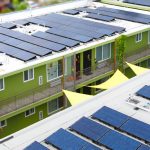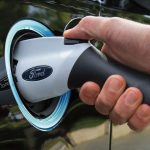Solar Lease vs PPA
What’s the difference between a solar lease and a solar PPA?
In short. Not much. These days it’s mostly just the name, but here’s the skinny.
Solar PPA:
In a Power purchase agreement, you are agreeing to buy the power – whether you need it or not. A third party is financing and building the power plant on your site with the deserved expectation that you will buy the commodity it produces so they can pay off the investment and make a profit. This is basically what electric utilities have been doing for over a hundred years.
- Solar PPA stands for solar “Power Purchase Agreement.”
- PPA gives you a low up front cost.
- You’re locked in for 10, 15 or perhaps 20 years to this agreement, which is transferable to a new owner.
- They charge you a set electrical rate that is sometimes flat, and sometimes calculated to rise over the term of your agreement. So instead of paying for coal or gas fired electricity rates, you’re paying for PPA rates generated through your “local” solar panels.
- The PPA company takes care of the maintenance and any needed repairs and monitors your system.
- You don’t get any tax benefits or State rebates or Renewable Energy Credits (RECs).
- You usually have some kind of option to buy later or at the end of the agreement for a set price per watt. Sometimes this is negotiable (and you should at least try since used solar panels aren’t worth much.)
- You need to have an excellent credit rating to qualify.
- You’re tied to the grid, so any residual electricity needs that your solar panels don’t produce is covered by your utility.
Solar Lease:
In a lease, you are leasing equipment. A third party is financing and building the equipment (e.g. solar power plant) on your site with the deserved expectation that you will pay off the hardware over time. When the lease is paid off you can usually “turn it back in”, buy it out at a predetermined residual value, or extend the lease term.
- There is usually no down payment, so $0 down.
- You’re locked into 15 years or more years, which is transferable to a new owner or home.
- In a solar lease, vs. PPA, you do NOT pay for any power that your solar panels generate.
- Instead, you pay a lease payment plus any extra power you need to buy from your electric company. So, solar panel power is technically free, but you have a set lease payment that rises 3 to 4% a year. That’s typically less than the 5% rate increases by your electric company. Some programs have a flat rate, so no yearly increases. You usually have flexibility on the payment model.
- Like a PPA, they usually take care of maintenance and repairs and monitor your system, but that’s not always the case.
- Similarly, you don’t get tax benefits or rebates or Renewable Energy Credits (RECs).
- Like PPA’s, you have an option to buy later or at the end of your term for a set residual price. You should try to negotiate the Fair Market Value (FMV) at the end of the lease, as used panels aren’t worth much more than the cost of taking them off your roof.
- You need to have a good to excellent credit rating also, depending on the program.
- Also like a PPA, you’re tied to the grid, so any residual electricity needs are covered by your utility.
So, bottom line for a solar lease vs. PPA:
- PPA, you pay for power generated by solar panels with some money down and flat or yearly increases on your PPA electric rate. You also benefit from tiered rates.
- Lease, you have no money down (typically) and pay a flat leasing fee that rises every year by a certain percent, plus left over utility bill. You also benefit from tiered rates.
While both these options are good for low cost financing, there’s not a huge difference when it comes to a solar Lease vs. PPA. If it saves you money and you like what you see, go for it.
Now 3fficient is offering a new option. It’s called an energy services agreement (ESA). This new financial model is similar to a PPA or Lease, but instead of just solar, you can get various efficiency upgrades too. Basically, by agreeing to host our smart microgrid on site and buying power at a lower cost than the utility, you’ll also get a myriad of building and process upgrades included. Like a PPA, you will not own the energy equipment so it will not impact your credit rating or borrowing power. You’ll be free to use your credit for important purposes like say, growing your business. You’ll get resilient, clean energy that will “keep the lights on” even when the grid is down.
Either way, you have nothing to lose by getting a quote from and comparing the financial pros and cons. Upon request, we’ll even give you both options, so you can compare an energy services agreement with outright purchasing.




Leave a Reply
Want to join the discussion?Feel free to contribute!